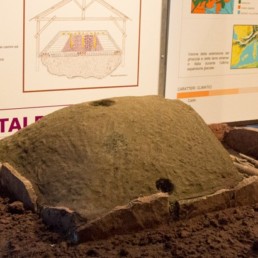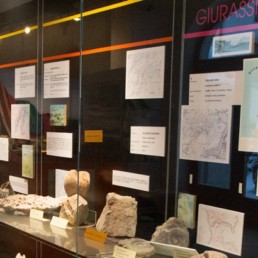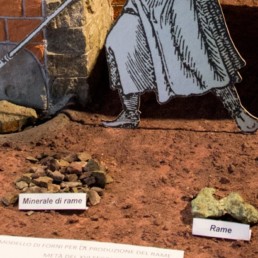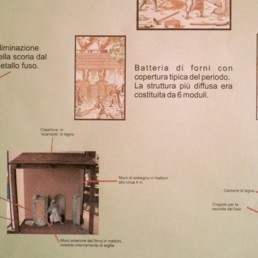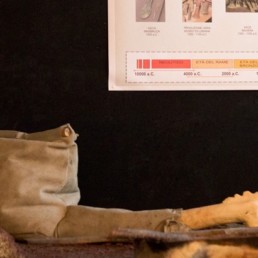The Museum of geology, paleontology, and mineralogy of the Agordo Dolomites occupies the two floors of the “former slaughterhouse” in Agordo. Visitors are welcomed by a large image of the Pale di San Lucano cliff escarpment (4 × 2 meters), with its explanatory drawing, in addition to some samples of rocks from the stratigraphic series of the Dolomites and some specimens of large minerals, including fluorite with crystals of 20 cm and siderite of 3 quintals. Some vertical showcases collect the stratigraphic sequence, divided into geological periods of the Agordino: from the Paleozoic Crystalline Base to the more recent Majolica (the last phase of the Late Jurassic, approximately between 145 and 152 million years ago). Each showcase illustrates the characteristics and distribution of the geological formations and exhibits samples of fossils and minerals. Particularly rare are the specimens that emerged in metamorphic rocks, such as graptolites and corals, from the Ponte Alto area. There is also a very rare example of the crustacean “Euthycarcinus kessleri HANDLIRSCH”. The ammonites on display also have a high value, both from an aesthetic and scientific point of view. A space is dedicated to the illustration of fossilization processes with various types of fossils arranged according to the paleontological system. In the center of the room, an illuminated glass tank allows you to reconstruct the tropical reef environment with a hypothetical track with dinosaur footprints. Very large images with the geological profiles of the mountain groups of Marmolada, Civetta, and Pelmo, with related explanations, illustrate the walls of the Museum together with the geology and geomorphology of the Agordino. In a specific section dedicated to archaeometallurgy, you can discover the details of the processes of working minerals and metals, also through some models aimed at reconstructing the history of copper metallurgy, starting from the experimentation and hypotheses on the models of the most ancient of smelting furnaces, up to the medieval ones, relating to the Belluno mining complex of Valle Imperina, near Rivamonte Agordino. On the upper floor of the Museum, they dedicated an exhibition to topographical instrumentation with a vast exhibition of ancient and original instruments and faithful reconstructions of the Egyptian “merkhet” and Roman “groma”. Here you can also visit the museum’s temporary exhibitions.
At the former headquarters of the school, the exhibition proceeds with an important (about 3000 pieces) collection of minerals, Italian and foreign, donated by mining experts witnessing an “active school”, who were trained here but employed elsewhere because of a lack of work. Particular attention is given to minerals from historical mining sites in the Agordino area, such as Valle Imperina, Valle di San Lucano, Valle di Gares, Caprile mine, and “Fursil” mine, located between Selva and Colle Santa Lucia. This collection began in the 1920s. On the ground floor of the school, there is a permanent exhibition that it illustrates the Belluno Dolomites National Park following a path that crosses the theme of fossils, geological stratigraphy, tectonics, and landscape reading. Here are also housed historical instruments of topography, mining, and explosives, within the permanent exhibition: “Five centuries of history, technology and ingenuity in the Imperina Valley” by the mining expert Gianfranco Mazzolli, with numerous explanatory panels and original maps of the mine, starting from 1600. Here you can find a large collection of mining devices and tools and the story of the miners’ clothing.
Contacts
Via V Maggio 16
32021 Agordo – Belluno
Tel. 3288180959
Email preloran.d@alice.it


